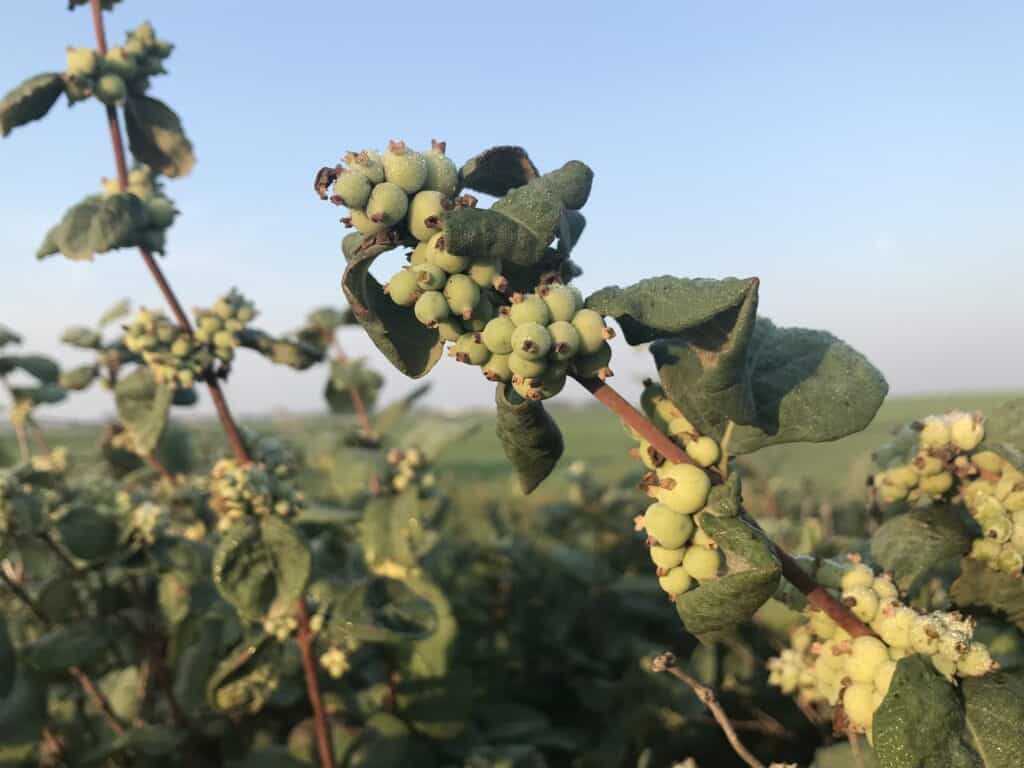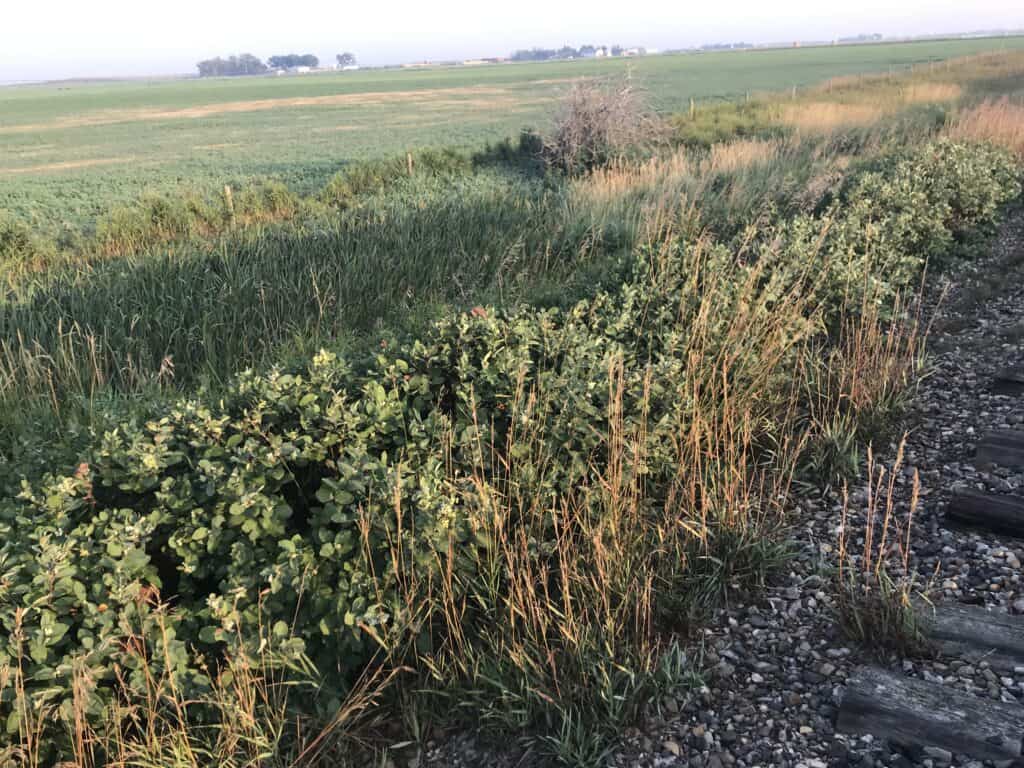Also known as Western Wolfberry, Western Snowberry is an ubiquitous native shrub found throughout most provinces in Canada. The one pictured below has clearly been growing for years along a railroad track that meanders through miles of farmland.

Growth Habits
The Western Snowberry spreads by rhizomes to form thickets, which makes it a great choice to stabilize the soil of banks and slopes. Although the nutlets (or seeds) can pass intact through some birds and other animals’ digestive tracts, it is rare that these shrubs grow from seed.
Not picky about sunlight requirements, the shrub can handle both full sun and shade, and anything in between. It can tolerate dry to moist conditions.
Apparently the shrubs can be an annoyance to ranchers in some areas due to the fact that they can and do choke out native grasses when they are unhealthy (ie. heavily grazed). Something to think about if you live next to a ranch or pasture with grazing cattle!

Bloom Period
June marks the beginning of the snowberry’s flowering period, but blooms may continue until August. This makes it a hugely attractive native plant for many pollinators, but also hummingbirds! The flowers are pinkish to white.

Fruit
If the flowers are adequately pollinated, fruits begin to grow and ripen from mid-July to August. The greenish to white berries produced by the Western Snowberry in the fall are POISONOUS TO HUMANS.
Birds and small mammals will eat the berries, but they are not a major food source for any particular species.
After hanging on all winter, if they aren’t eaten, the fruits will fall to the ground the next spring or early summer.
In Conclusion
Should you plant Western Snowberry in your new backyard native garden? If you have the space to accommodate its aggressive rhizome spreading, or if you need to stabilize a slope, then maybe! Otherwise, do some research first. Consider cultivating other native plants that support a large amount of native insect populations instead.
Watch this interview with Doug Tallamy for reasons why to grow native plants, shrubs and trees in your backyard.
Happy Gardening!

